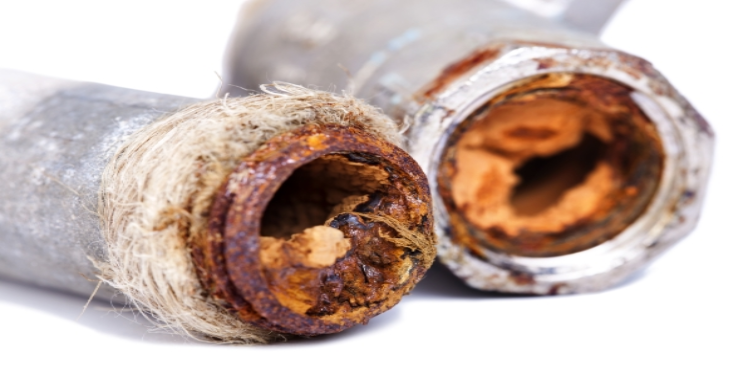
If you’ve noticed water heater pipe corrosion, you might be wondering how much of a problem it is and whether it’s something that requires an immediate (or expensive) fix. Corroded water heater pipes are a fairly common issue, and the most likely cause of the corrosion is that two different metals are interacting with one another. Your neighbourhood Mr. Rooter Plumbing can help you figure out your next steps, and we’re happy to help get the problem under control again.
What Causes Corrosion on Water Heater Pipes?
There are a few possible causes of corrosion on water heater pipes.
- Steel pipes corroding. If the hot or cold inlet pipes are made of steel, they could be rusty or corroded due to exposure to the constant presence of oxygen and water. To remove rust or white, flaky corrosion on the outside of water heater pipes, simply scrub it away using a damp scrub brush and some white vinegar.
- Galvanic corrosion. This is the most common type of corrosion on water heater pipes. It happens when two different metals (such as steel and copper) meet, fuse together, and begin corroding. This usually occurs at the fitting where the two different materials meet.
Related Topic: How to Prevent Rust Stains in Your Toilet
How to Remove Corrosion from Water Heater Pipes
Since galvanic corrosion is most likely the type you’ll be dealing with, let’s review how a professional plumber would address the corrosion. It’s important to note that this water heater repair project requires specialized tools and professional expertise. Dealing with natural gas or high-voltage electricity is dangerous. Therefore, this is NOT a DIY project. A licensed plumber will fix this problem in the following way:
- Turn off the water, gas, and/or electricity to the water heater.
- Open all your home’s hot water valves to completely drain the water.
- Open the heater tank valve to drain any remaining water.
- Remove the cold-water inlet pipe at the top of your tank, above the corroded area.
- Remove the corroded fitting from the top of the tank.
- Attach the new copper pipe to the new fitting. Solder it.
- Ensure the new fitting is properly sealed.
- Add a coupling to the new section of pipe and solder it in place.
- Test the system to ensure it is working properly, with no leaks.
In addition to all these steps, you should schedule a plumber to drain and flush your water heater at least once a year. This will help remove sediment buildup in the tank, eliminate some metals and other solids from the water supply, keep the unit running efficiently and extend its life.
Find Help for Water Pipe Corrosion
In most cases dealing with damaged pipes requires specialized tools and a bit of plumbing know-how, which not every homeowner feels comfortable doing. Although some pipe corrosion may be visible, other corrosion may be hidden from your view. To ensure all your plumbing is in good condition, contact your local Mr. Rooter Plumbing and ask about our plumbing diagnostic and inspection service. To learn more, call us or request an estimate online today.

